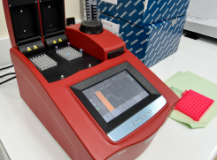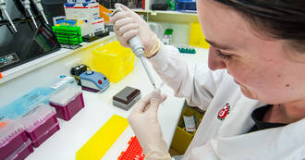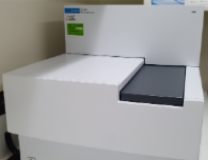





Spinal muscular atrophy (SMA) is a neuromuscular disorder characterised by degeneration of the anterior horn cells of the spinal cord, leading to symmetrical muscle weakness and atrophy. The SMA disorder is usually divided into three clinical groups: SMA type I (OMIM 253300), SMA type II (OMIM 253550) and SMA type III (OMIM 253400). There are two (highly-similar) genes which play a pivotal role in SMA: The survival of motor neuron 1 and 2 (SMN1 and SMN2) genes. Most cases of SMA type I result from homozygous gene-deletion events of SMN1. The majority of these patients carry a homozygous deletion of SMN1 and a normal or reduced number of SMN2 copies. The majority of the type II and III SMA patients show homozygous absence of SMN1 and an increased number of SMN2 copies (3–4 copies). These are more likely to result from gene conversion of SMN1 into SMN2; SMA type II from a gene conversion event in one allele in addition to a hemizygous deletion event in the other allele; in SMA type III from gene conversions in both alleles. As a result, patients affected with the milder forms of SMA generally carry more copies of the SMN2 gene.
MLPA analysis is performed using a commercially available kit from MRC Holland (www.mrc-holland.com) followed by analysis on a 3500XL Genetic Analyser. This kit can detect dosage changes (deletions/duplications) of the SMN1 and SMN2 genes. Data is analysed using GeneMarker software (www.softgenetics.com). Results are compared with positive and negative controls.
Test |
Cost NZD* |
Sample Requirements |
Current TAT |
|---|---|---|---|
| MLPA analysis | $149 | Adults: 4 ml in EDTA (purple top) Children: 1-2 ml in EDTA (purple top) For newborns and very young babies supply 1 ml EDTA (purple top) |
2 - 3 weeks For urgent cases please contact the laboratory |